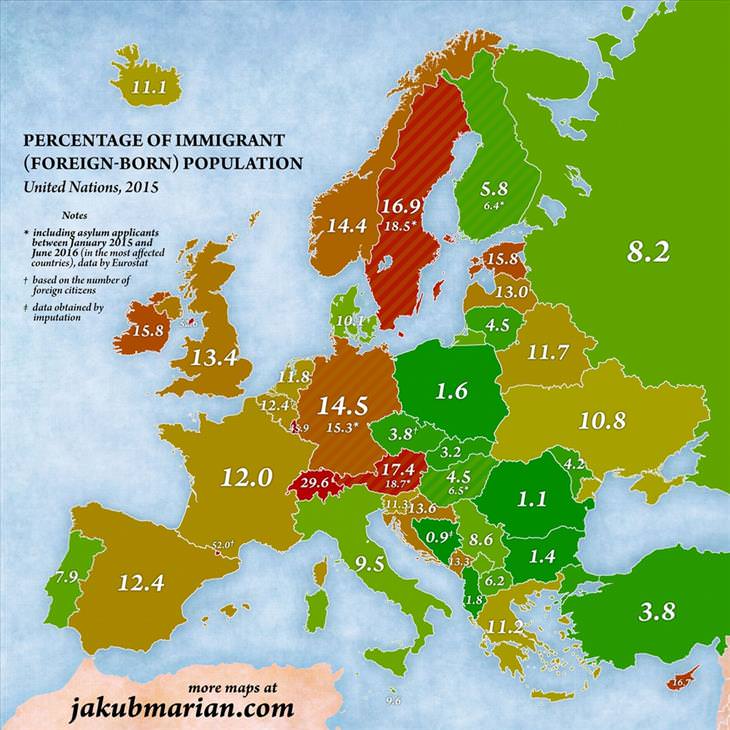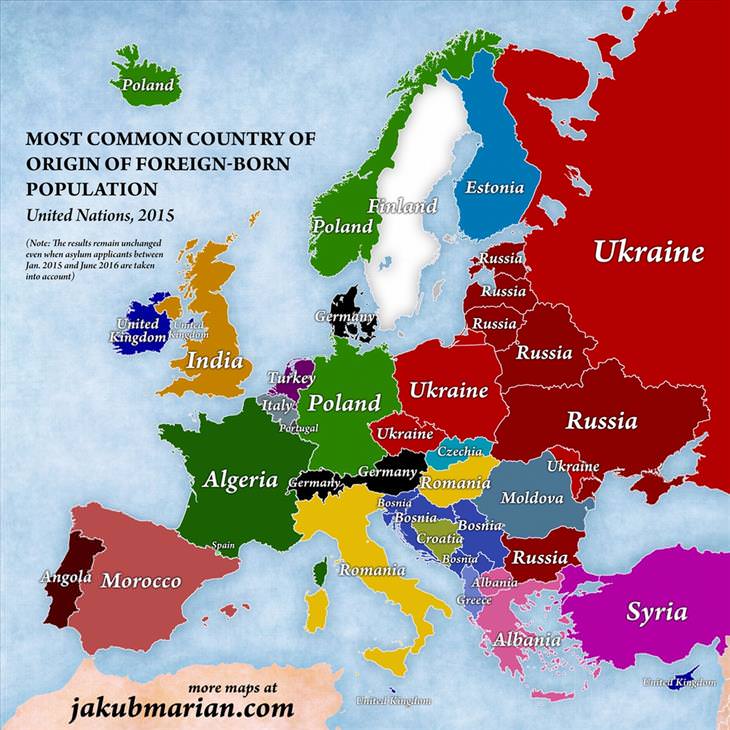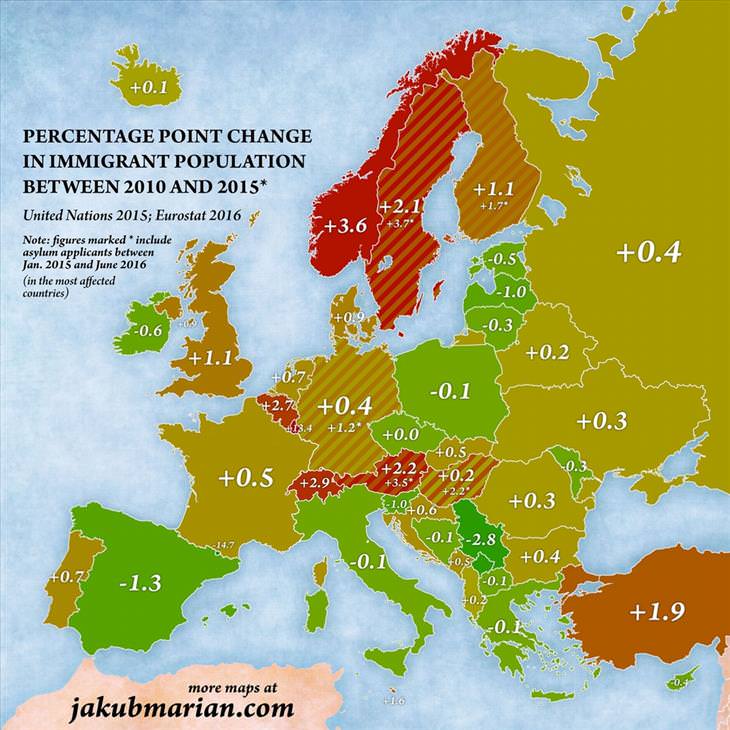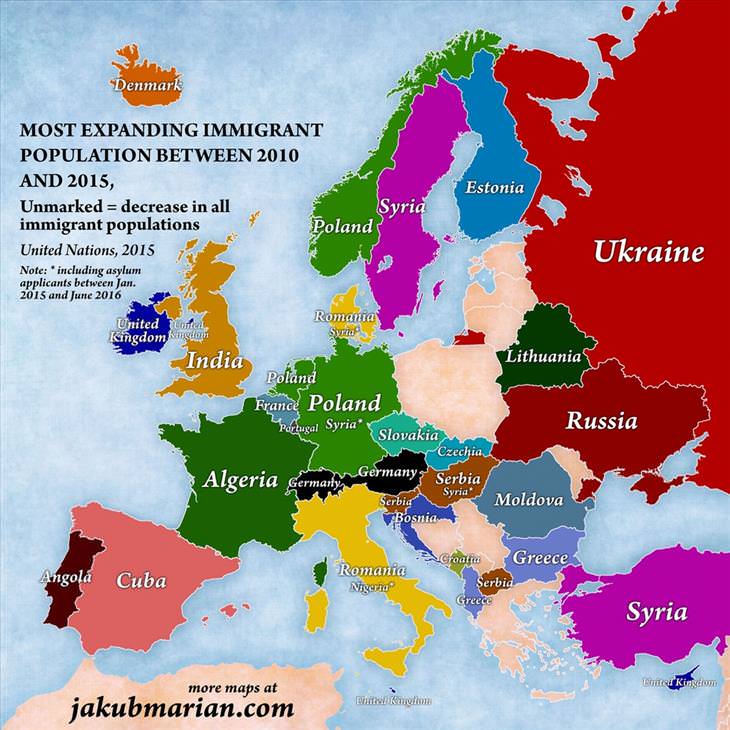
 10:30
10:30
China's Crazy Plan to Dig a Canal in the Middle of EUROPE
China is setting out a plan to dig a canal through the middle of Europe in the nearest future, but why?

The Great European History Quiz: How Much Do You Know?
This quiz will test your knowledge of some of the most significant events to ever take place within Europe's long and bloody history.
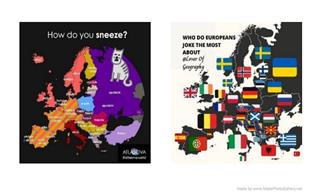
18 European Maps That Provide Fun and Fascinating Info
These cool and interesting maps will change your perception of Europe.

16 Ancient Maps That Change How You See The World
This collection brings together some of history's most remarkable maps.

These Unique Maps Show the World in a Whole New Light
This collection celebrates maps and their endless possibilities.

12 European Cities That Come to Life During Christmas
The following 12 European cities celebrate this winter holiday in their own unique way.

This Song By Frank Sinatra is So Beautiful
Sing through the lyrics of Frank Sinatra's Young at Heart here.

17 Ancient Artifacts That Still Astound the World
These ancient artifacts tell fascinating stories.

15 Rare Photos of Iconic Authors You've Never Seen
Your favorite iconic authors, as you've never seen them before.

Can You Guess the Meaning of These 20 Common Surnames?
We kind of take surnames for granted, as they are just passed down to us. But every name has an origin and meaning, and some might surprise you.

Some of These Facts About the US Will Leave You Speechless
We have collected the 50 most fascinating facts about each state. Some of them historical, some funny, and some straight out hard to believe.
 2:10
2:10
God Thought Long & Hard Before Creating the Dog...
They do say dogs are our best friend, and there is a reason for that.

How Companies Deceive Us All - 20 Pictures
As these 20 pictures prove, companies are constantly lying about the size and the quality of their products through deceptive packaging!

7 Notable Han Dynasty Inventions That Changed the World
Here, we look at some of the great inventions from the Han dynasty of China that had a great impact on the world.

These Fascinating Cat Facts Are Well Worth Sharing
You're definitely not a cat lover unless you know these 10 awesome facts about them!

9 Different Types of Oranges You Never Knew About
How many of these unique orange varieties have you tried?

11 of the Most Insanely Useful Websites on the Web
Believe it or not, there are tons of sites that offer useful free stuff. Here’s a look at a few of them.

INTERACTIVE: 12 Fascinating Facts About Napoleon Bonaparte
Whether you're a history aficionado or a curious learner, these insights offer a unique glimpse into the man behind the legend of Napoleon.

Love Mythology? You'll Love These Informative Animations!
These informative TED-Ed videos delve into some of the world’s most popular myths and attempt to explain them in all their glory!

These Things Will All Happen in the Next 24 Hours
The world is incredibly busy, and doesn't stop moving for anyone. Millions of things happen every second but these 19 things will happen over the next 24 hours.

Dogs: A Super Collection of Posts On Man's Best Friend
This collection will tell you some amazing things about our incredible friends, from learning the different breeds to dog psychology and much more. Have a pawsome day!

10 Mind-Blowing History Facts You Never Knew Were True
This article is a collection of 10 surprising and little-known ancient history facts, some serious, some mysterious, and some just plain odd.

14 Interesting Exhibits from the "Museum of Curiosities"
The "Museum of Curiosities" is an online platform that has some startling and fascinating treasures.
 10:31
10:31
A Unique Nursing Home You Need to Hear About...
This dementia village is the most progressive and forward thinking nursing home.
 4:55
4:55
Flashback: Unfreezing Ice Cream's Delicious Origins
Did you know that even ancient civilizations had ice cream?
 17:06
17:06
Wow! Look at the Size of These Massive Fruits & Veggies!
These massive fruits and vegetables could feed you for an entire year!

These Kind Inventions Were Made to Make Animals Happy
Every year humans build thousands of new roads, rails, airports and buildings. Many hurt the environment. But some kind people only build to help animals!

We Got Hold of Some Rare Historical Pics. Want to See?
It’s time for another fascinating collection of historical photos.

Real-Life Superheroes: Their Stories Will Amaze You
These real-life superheroes deserve recognition!

Incredible Maps: The World of Second Languages!
We all know the main languages, but these maps of second languages really surprised me!

8 Facts You Learned at School that Are No Longer True!
The passage of time leads things that were once accepted as facts to actually be proven as incorrect. Here are 8 supposed facts that aren’t really true.

Did You Know You're Intelligent If You Have These Traits?
There are certain signs of intelligence that are actually quite subtle. Here are 10 subtle signs that are hallmarks of intelligence.
 7:30
7:30
Fascinating - Real CIA Experiments of Psychic Powers
There is a US army unit investigating the potential of psychic phenomena. Yes, this is a true story. Learn about their most fundamental experiment here.

These Museum Items Give Us a Glimpse of a Fascinating Past
In these pictures, you will get to see some fascinating ancient artifacts that are well-preserved in museums.

The 10 Most Powerful Regrets People Have at the End
What are the 10 biggest regrets people have at the end of their days? Find out the truth...

These Fun Charts and Guides Teach You Tons of Cool Stuff
These charts and guides will come in handy. Save them!

This Man Interviewed 500 Rich People and Got These Tips!
Hill interviewed over 500 self-made millionaires over 20 years and these are his financial tips.

The Stories of These Women from History are Inspiring
Read the inspiring stories of these amazingly strong women.

This Will Change Your Perspective On Anger
Anger is an often misunderstood emotion. These facts about anger will change your views on this common emotion.

Using These French Phrases in English Elevates Your Speech
Even if English is the only language you speak, we’re more than convinced that you’re quite familiar with a bunch of French words...

4 Of the Strangest Unsolved Mysteries of All Time
Despite investigators' best efforts, these strange mysteries have remained unsolved...

13 Geniuses, Who On Some Level, May Have Been a Little Mad
These geniuses may have been smart, but they are incredibly weird too!
 22:40
22:40
Marcus Aurelius: The Emperor Turned Philosopher
This video will tell the Story of Marcus Aurelius, the emperor who turned into one of the greatest philosophers in history.

April Fools: The Most Iconic Pranks in History!
It’s April Fool's Day! Let’s check out some of the most iconic pranks in history.
 4:34
4:34
A Day in the Life of an Ancient Egyptian Doctor...
This video will show you what it was like to be a doctor in ancient Egypt.
 19:01
19:01
How Islam Separated Into Sunni and Shia: The Full Story
What happened, and why did it cause Islam to split into two factions?

These Latin Phrases Will Make You Think About Life
Take note of these beautiful and wise Latin phrases and understand their deep meanings.
To enable your Ad-Free Subscription, please fill the fields below
Your subscription was successful, now you can enjoy an ad-free experience!!
Note: To make sure you get no ads, please make sure to log in to your account. If you are logged in already, then refresh the page. The subscription can be cancelled at any time.



